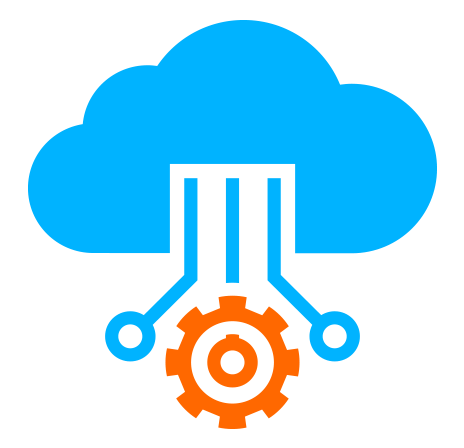 Server
Colocation
Server
Colocation
 CDN
Network
CDN
Network
 Linux Cloud
Hosting
Linux Cloud
Hosting
 VMware Public
Cloud
VMware Public
Cloud
 Multi-Cloud
Hosting
Multi-Cloud
Hosting
 Cloud
Server Hosting
Cloud
Server Hosting
 Kubernetes
Kubernetes
 API Gateway
API Gateway

In 2025, more than 94% of enterprises are using cloud services in some capacity, according to Flexera’s State of the Cloud Report. While the shift to the cloud has opened doors to flexibility, scalability, and speed, it has also introduced a new layer of complexity—managing cloud costs.
Cloud spending often starts as a trickle but can quickly become a flood. Organizations that don’t actively monitor their cloud cost drivers may find themselves overshooting budgets, missing optimization opportunities, or worse, paying for services they don’t even use. Whether you're hosting on AWS, Azure, Google Cloud, or a Cyfuture Cloud environment, it’s essential to understand what exactly contributes to your cloud bill—and how to control it.
Let’s dive into the key cloud cost drivers that you should watch like a hawk and how doing so can lead to smarter cloud savings without sacrificing performance.
Why Cloud Costs Spiral Out of Control
Before we get into the details, let’s understand the why behind rising cloud expenses. The cloud gives you the freedom to spin up compute instances, provision storage, or deploy apps in minutes. That’s powerful—but also risky if not governed.
Here are some of the top reasons cloud bills unexpectedly increase:
Overprovisioning of servers
Idle or zombie resources
Unmonitored data egress
Choosing the wrong hosting model
Lack of visibility into usage patterns
Now, let’s break down each cost driver you should monitor and how to optimize them.
1. Compute Resources (Virtual Machines/Instances)
Compute resources are typically the largest contributor to your cloud bill. Whether it's virtual machines (VMs), containers, or serverless functions, they all carry costs based on how long they run and what capacity they use.
Instance type: Using a high-performance server for a low-priority job is like using a sledgehammer to push a pin.
Uptime: Are your servers running 24/7 even if they’re not needed all the time?
CPU/RAM utilization: If average usage is under 40%, you’re likely overpaying.
Use auto-scaling to spin resources up or down based on demand.
Schedule non-production environments (dev/test) to shut down during off-hours.
Take advantage of Cyfuture Cloud’s right-sizing tools that help you match resource allocation with actual usage.
2. Storage Costs
Data is cheap to store—until it isn’t. Storage-related costs can sneak up if you don’t actively manage them.
Storage type: SSD vs HDD, object vs block storage—each has a different pricing model.
Retention policies: Are you keeping data that should have been archived or deleted?
Snapshot & backup sprawl: Frequent automated backups can lead to duplicate storage.
Move cold data to lower-tier storage classes like Cyfuture’s archival storage.
Set up automated lifecycle policies to delete or move old data.
Clean up unused volumes and orphaned storage from decommissioned servers.
3. Network and Data Transfer (Egress)
One of the most overlooked cost drivers in cloud computing is data egress—how much data you’re sending out of the cloud.
Data transferred between regions or zones.
APIs or applications that move large files frequently.
Third-party integrations that constantly pull data out.
Use content delivery networks (CDNs) to minimize cross-region traffic.
Keep workloads within the same availability zone.
Consider private interconnects for high-volume data transfers.
4. Unused or Zombie Resources
Zombie resources are cloud assets you forgot to delete or stop using but still pay for.
IP addresses that are reserved but unused
Load balancers with no active connections
Disks not attached to any server
Test environments that were never shut down
Implement a resource tagging policy to track ownership.
Use automation tools to shut down idle resources.
Review your Cyfuture Cloud usage dashboard monthly to catch anomalies.
5. Licensing and Marketplace Add-ons
Software licenses and third-party tools from cloud marketplaces can add up fast.
Premium OS licenses (Windows Server, RHEL)
Managed database licenses (SQL, Oracle)
Security or monitoring software subscriptions
Evaluate if open-source alternatives meet your needs.
Consolidate licenses under enterprise agreements.
Use cloud-native tools provided by platforms like Cyfuture Cloud for logging and monitoring instead of third-party add-ons.
6. Multi-Cloud and Hybrid Cloud Complexity
While multi-cloud and hybrid cloud hosting strategies offer flexibility and risk reduction, they can also lead to cost inefficiencies if not managed properly.
Redundant services across providers
Duplicate storage in different clouds
Networking costs due to cross-cloud data transfers
Centralize cost management across all clouds using tools like Cyfuture Cloud Control Panel.
Avoid duplicating workloads unnecessarily.
Choose a primary cloud provider and offload only specialized workloads.
7. Human Error and Lack of Governance
Sometimes, it's not the technology—it's the people. Without clear rules, cloud resources can be spun up ad hoc, forgotten, or misused.
Who is provisioning what and why
Resources without business justification
Billing alerts and budget thresholds
Set spending limits and role-based access controls.
Train teams on cloud cost awareness.
Automate provisioning through templates to ensure cost-effective defaults.
Why Cyfuture Cloud Stands Out in Cost Optimization
Unlike general cloud providers, Cyfuture Cloud is designed with a cost-conscious architecture and Indian data centre hosting costs that are tailored for both startups and enterprises.
What makes it cost-efficient?
Transparent pricing models
Customizable compute/storage tiers
Built-in optimization and usage analytics
24/7 support to help you stay on top of your hosting infrastructure
Whether you’re looking to host enterprise apps, migrate servers, or set up development environments, Cyfuture Cloud helps reduce wastage while maintaining high performance.
Conclusion: Cost Control Is an Ongoing Process
The beauty and danger of cloud computing lie in its on-demand nature. With great flexibility comes the risk of ballooning costs—if you're not paying attention.
The key takeaway? Don’t treat cloud expenses as a fixed cost. Instead, treat them as a living metric that reflects how efficiently your organization is using technology. The most successful companies are those that continuously monitor their cloud cost drivers, right-size their environments, and evolve their cloud strategy based on actual usage.
Platforms like Cyfuture Cloud not only provide robust infrastructure but also give you the tools to make smarter, leaner decisions about your cloud journey.
Remember, cloud savings don’t come from cutting corners—they come from knowing exactly what you’re paying for.

Let’s talk about the future, and make it happen!
By continuing to use and navigate this website, you are agreeing to the use of cookies.
Find out more


